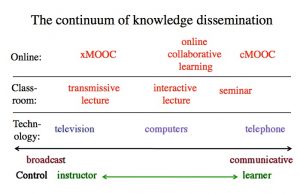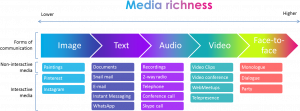My most memorable online learning experience so far is from an online course “Learning Design”, which focuses on creating and analysing different ways that enhance learning, for both instructors as well as learners. In one of my recent assignments for this class, I had to conduct a Usability Test on any application of my choosing and had to analyse my results. Well, what is Usability Testing? Usability Testing refers to the way a product is tested using a number of its representative participants, to understand whether it is easy and effective to use or not. (Affairs, 2013). The aim of usability tests is to receive qualitative and quantitative feedback from participants, which is used to make changes in the design process of the product. (Affairs, 2013). Usability testing enables the design and development team to recognize and fix problems before the product is launched (Rees, n.d.). Identifying a problem in the early stage of development, allows a scope for change and also decreases production costs of the product (Rees, n.d.).
Shown below is a video that demonstrates the key points of a usability test.
Through Learning Design, I was able to understand the concept of Usability Testing, and how to successfully conduct it. From start to end, the instructor mainly used broadcast media as a method of teaching, rather than communicative media as assignments were posted along with instructions and descriptions. Going into further detail, broadcast media is the one-to-many method of communication user primarily in radios, cable, movies, etc.; many online courses that are not lecture-based also use this type of communication to teach (A.w., Tony, & Bates, 2015)
For this assignment, the instructor provided us various sample usability tests along with our assignment description. Upon reviewing the samples posted, I was able to come up with an outline for my usability test. For the test, I had to create a Test Plan which included creating a task list for participants to perform, and also gather participants to conduct the test. In the sample assignments posted, there were detailed test plans, which behaved as a reference, enabling the creation of my plan to be easier.
One of my favourite aspects of online learning and this Learning Design course was the incorporation of media richness to enhance learning processes. Media richness refers to a medium’s ability to communicate effectively (Chandler & Munday, n.d). Rich media can easily clarify ambiguous issues compared to non-rich media, which usually takes longer to achieve the same ends, or are incapable of doing so. (Chandler & Munday, n.d). This study explores how visual stimulation enriches understanding, which is why it’s essential in education.
While I believe that media richness should be integrated in learning processes, it is important to understand the level of simplicity of the content that needs to be delivered. The instructor for this course accurately determined the level of richness this assignment required, and hence provided us with 3 sample assignments, each including a report, the usability test recorded in a video, and an audio recording. Based on the richness scale below, the instructor was close to achieving the highest level of media richness through his teaching method.
While this course did not include the highest level of media richness – “face-to-face” communication, the instructor still manages to make this class fun and interactive and gives us interesting assignments that makes us go out of our comfort zones and explore more about learning.
This online learning experience also humanized online learning – a concept that creates a way to connect learners with each other (Benham, et al., 2018). For starters, this project was assigned as a group project, with members of our choosing. This allowed students to communicate amongst each other, on the online forum provided to them by the professor. Students were also encouraged to ask questions on that forum and have discussions amongst other learners. These forums also allowed communicative media to be incorporated in this environment, rather than just restricting it to the broadcast media method of teaching.
Overall, this online course has been a fun and enriching experience, which exposed me to many new online learning, and how effective it can be without following the traditional teaching methods.
References:
Benham, B., Dellinger, J., Patterson, A., Semingson, P., Spann, C., Usman, B., … Crosslin, M. (2018, June 22). Chapter 5: Effective Practices. Retrieved from https://via.hypothes.is/https://uta.pressbooks.pub/onlinelearning/chapter/chapter-5-effective-practices/
A.w., Tony, & Bates. (2015, April 5). 6.4 Broadcast vs communicative media. Retrieved from https://opentextbc.ca/teachinginadigitalage/chapter/8-3-broadcast-vs-communicative-technologies/
Chandler, D., & Munday, R. (n.d.). A Dictionary of Media and Communication. Retrieved from https://www.oxfordreference.com/view/10.1093/acref/9780199568758.001.0001/acref-9780199568758



Leave a Reply